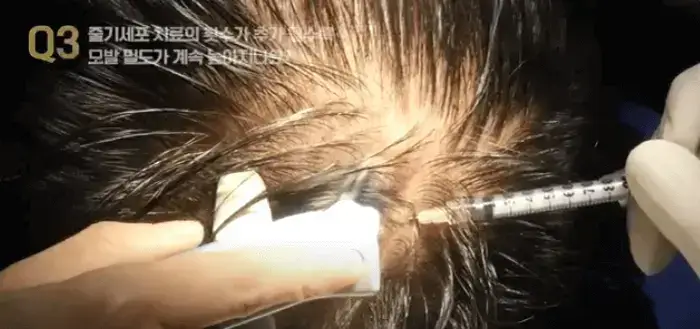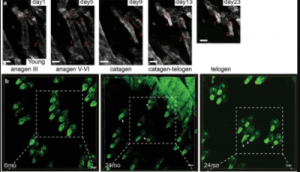
Last month, someone sent me an interesting link to a new type of stem cell based non-surgical hair growth procedure in South Korea. It is offerred by Park Kyung-won, director of the Gemma Hair Transplant Center.
It seems like the original English version of the article is no longer available. I initially used that one to write my post. Note that Gemma hair also has a blog on Naver.
Mr. Park has been offerring hair transplants and conducting hair loss research for almost two decades. Almost 15,000 hair transplant procedures have been perofmed at this clinic as of 2024.
South Korea is a world leader when it comes to cosmetic procedures and new experimental regenerative medicine treatments. In the world of exosomes, a South Korean company named ExoCoBio is making big waves in Europe. And of course we have all become familiar with CosmeRNA, the world’s first RNA-based cosmetic hair loss treatment. The number of South Korean companies involved in creating new hair loss products and treatments is particularly impressive.
New Hair Stem Cell Transplantation Process
This new stem cell based process was validated for efficacy at Hanyang University Medical School (South Korea) in 2023. Moreover, in October 2023, Director Park filed a patent application for “a method for promoting transplantation and growth after transplantation using hair stem cells.”
According to Park Kyung-won (in the original English version of the article):
“The larynx has relatively more hair than other areas and is immune to the ‘DHT hormone’ that attacks hair follicles,” he said. “We have succeeded in commercializing non-surgical treatment in Korea that injects hair root stem cells collected from the larynx into the hair loss area for the first time.”
He goes on to say that after just one stem cell transplant procedure, it is possible to activate resting hair follicles and make existing hair thicker.
The description of this process is a bit confusing due to the use of the word larynx, which is the internal voice box area near the middle of your neck. Does this really just mean the beard or body hair near your throat region?
Considering that this is in South Korea, I doubt that too many residents have dense beards running all the way down to the middle of their necks.
Update: In the Korean version of the article, they use the phrase “occipital area” area, and this makes more sense.
“The occipital area has relatively more hair than other areas and has immunity to the ‘DHT hormone’ that attacks hair follicles.”
Also confusing is that later on in the (original) article, it talks about extraction from the occipital region of the scalp. And the use of a 5cc activated blood solution, which they refer to as platelet-rich-plasma (PRP). Perhaps some of these issues are due to Korean to English translation of the interview?
Another vague statement:
“Stem cells proliferate on their own, so you only need to collect 100 to 200 hairs to plant 3000 hairs.”
Follicle Stem Cell Extraction Kits
Below is a new Korean video from Gemma Hair Tansplant Center. The last one-third of it has an Indian doctor named Dr. Surtakant who is from Cryobank Research Centre (India) talking in English. He discusses the increasing popularity of non-surgical follicle stem cell hair transplants in India. He specifically mentions these new stem cell extraction kits and their difference from PRP.
In 2023, Dr. Park partnered with Cryo Center (India) to increase the purity of stem cells. Since then, he has purchased ownership of the “stem cell extraction kit” developed by Cryo Center. Only high-purity stem cells remain after processing. I assume this Cryo Center is the same as the Cryobank Research Centre shown in the below YouTube video.
The efficacy of the kit was verified at Hanyang University Medical School (South Korea). According to Kang Joo-seop, a professor of pharmacology at Hanyang University:
“Tissue staining tests such as ‘H&E’ and ‘IHC’ were conducted on stem cell fluids extracted by kits, and a large amount of Sox-10 (embedded stem cell-specific expression antibodies) were found.”
He also states that the PRP type solution from these kits contains far greater amounts of stem cells than what was seen in past autologous hair stem cell therapy attempts.
As of February 2024, Director Park’s injection of hair stem cells has been administered in about 40 patients.
